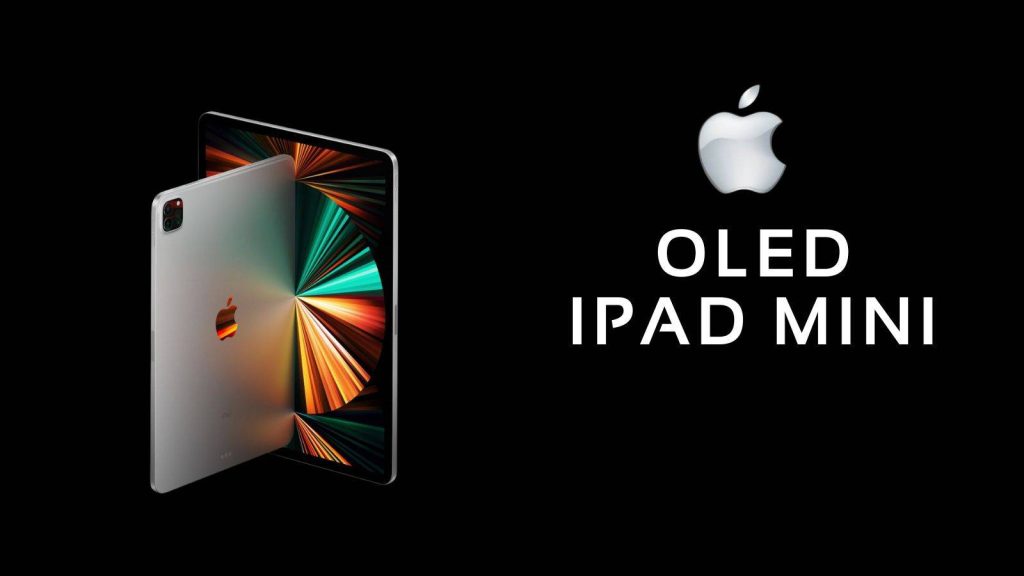When Apple makes a move, the entire tech world listens — and this time, it’s not just a regular upgrade. Apple is preparing to introduce OLED technology into its iPad lineup, beginning with the iPad mini. This signals a major leap forward for the company’s display technology and a new phase in its long-term hardware evolution.
OLED displays aren’t new in the tech world, but their arrival on the iPad series — especially the iPad mini — shows Apple’s commitment to refining visual quality, efficiency, and design precision. Know why this shift is so significant, what makes OLED special, and how it will redefine the Apple experience across devices.
Why Everyone’s Talking About Apple’s OLED Plans
Apple’s move toward OLED technology has been a topic of excitement and speculation for years. With iPhones already using OLED panels since the iPhone X, users have been wondering when the same brilliant visual experience would reach the iPad. That time appears to be now.
Industry insiders and Apple analysts have reported that the OLED iPad mini could arrive as early as late 2025, marking a fresh chapter for Apple’s tablet lineup. Unlike previous display technologies, OLED delivers a perfect mix of high-end color vibrancy, contrast precision, and battery efficiency — something Apple has long aimed for across all devices.
This transition is not just a technical change but also a strategic shift. It positions the iPad mini as more than a compact device — it’s Apple’s testbed for future display innovations that could reshape the iPad and MacBook ecosystem entirely.
What Is OLED Technology and Why It Matters for Apple Devices
OLED (Organic Light-Emitting Diode) technology operates differently from LCD and Mini-LED panels. Instead of relying on a backlight, OLED pixels light up individually, meaning they can turn completely off to produce pure blacks and richer contrasts.
For Apple users, this means more lifelike visuals, deeper blacks, and colors that look natural even in bright sunlight. OLED panels also respond faster, making animations smoother and touch interactions more responsive — an important benefit for gaming and creative apps.
OLED is thinner and more power-efficient, allowing Apple to design slimmer, lighter, and more energy-conscious devices. Considering Apple’s commitment to sustainability and energy optimization, OLED fits perfectly into its long-term environmental strategy as well.
iPad mini 7: First Compact iPad to Feature OLED
Upcoming iPad mini 7 is rumored to be the first small-sized Apple tablet with an OLED screen — and this is huge. With its 8.3-inch display size, the iPad mini already offers a unique balance of portability and productivity. Now, with OLED, it’s set to deliver a premium visual experience that rivals high-end smartphones and even the iPad Pro.
Reports indicate that Samsung Display and LG Display are working closely with Apple to produce these OLED panels. The display is expected to feature double-layer tandem OLED technology, which enhances brightness and longevity while reducing power consumption.
Sketching in Procreate, streaming Netflix, or using it for business tasks, the OLED iPad mini will offer richer contrast, improved HDR performance, and superior color depth. This could make the iPad mini a favorite among content creators, gamers, and readers alike.
Why Apple Is Finally Moving to OLED Displays
Apple is known for taking its time with new technologies — and OLED is no exception. The company first introduced OLED in the iPhone lineup years ago but waited to bring it to larger screens. The reason? Cost, yield rates, and durability challenges.
Now, after years of innovation from display manufacturers, OLED production has become more cost-effective and reliable. Apple’s partners, including Samsung and LG, have achieved higher yields and improved efficiency in large-scale OLED panel manufacturing, finally making it feasible for iPads and MacBooks.
This transition aligns with Apple’s broader goal of maintaining display consistency across devices — ensuring that whether you’re using an iPhone, iPad, or MacBook, the screen quality feels equally premium.
OLED vs Mini-LED vs LCD: Which Display Wins for Apple Users?
Here’s a detailed comparison that shows why OLED stands out as the future of Apple’s displays:
| Feature | OLED | Mini-LED | LCD |
|---|---|---|---|
| Contrast | Perfect blacks | Excellent, but backlight bleeding | Average |
| Brightness | Very high | Highest overall | Moderate |
| Color Accuracy | Outstanding | Very good | Decent |
| Power Efficiency | Great | Good | Fair |
| Thickness | Thinner | Moderate | Thickest |
| Cost | High (but falling) | Moderate | Low |
OLED’s self-illuminating pixels make it the clear winner in most categories. The only trade-off historically has been cost, but with Apple’s scale and supplier relationships, that barrier is quickly diminishing. For users, this means the next iPad mini could offer the same stunning visuals found on high-end OLED TVs and smartphones — all in a compact, portable form.
Which Apple Devices Will Get OLED Next?
The OLED iPad mini is only the beginning. Apple reportedly plans to expand OLED displays to its entire iPad and MacBook lineup in the coming years. Here’s what’s expected:
- iPad Air and iPad Pro (2026–2027) – Apple’s mid and pro-tier tablets will likely get next-gen OLEDs with improved refresh rates and energy management.
- MacBook Air and MacBook Pro (2026–2027) – OLED will allow thinner designs and better battery efficiency for Apple’s laptops.
- iPhone SE (2027) – Even Apple’s budget phone may soon feature an OLED screen.
By 2027, Apple could be running an almost OLED-only ecosystem, setting a new standard in the consumer electronics industry.
How OLED Could Redefine the iPad mini Experience
The OLED iPad mini will be more than just visually stunning — it’ll feel like a brand-new device. Reading text will look sharper, watching HDR content will feel more immersive, and using creative apps will show finer color accuracy than ever before.
Artists will love the enhanced color fidelity for digital sketches, and gamers will appreciate smoother frame transitions and reduced motion blur. Plus, the display’s improved efficiency means the battery can last longer without sacrificing brightness.
Apple could even take advantage of OLED’s thinner form factor to make the iPad mini lighter, more compact, and more portable — perfect for those who travel or work on the go.
What Analysts Say About Apple’s OLED Transition
Experts like Ross Young (Display Supply Chain Consultants) and Ming-Chi Kuo (TF International Securities) have long predicted Apple’s OLED strategy. They’ve mentioned that Apple is heavily investing in OLED panel development, signaling this shift isn’t temporary but part of a multi-year transformation.
Apple’s contracts with suppliers also indicate a commitment to scaling OLED production for future devices, showing confidence in the technology’s durability and energy efficiency. According to analysts, this will boost display performance while reducing power usage by up to 30% compared to Mini-LED — a win-win for both performance and sustainability.
Price and Availability: What to Expect for the OLED iPad mini
While Apple hasn’t announced pricing, market expectations suggest the OLED iPad mini 7 could start between $549 and $599, slightly higher than its predecessor. That’s reasonable given the cost of OLED manufacturing and the significant performance improvements it brings.
The launch window is expected to be late 2025, possibly coinciding with new iPad Air and MacBook refreshes. As always, availability will begin in major markets like the U.S., U.K., and Japan before expanding globally.
FAQs
1. What is the OLED iPad mini and why is it important?
The OLED iPad mini is Apple’s upcoming compact tablet featuring an OLED (Organic Light-Emitting Diode) display for the first time. It’s important because it marks Apple’s shift to OLED across its iPad lineup, promising richer colors, deeper blacks, and better energy efficiency.
2. When will the OLED iPad mini be released?
According to industry reports, the OLED iPad mini release date is expected in late 2025. Apple hasn’t officially confirmed it yet, but suppliers like Samsung and LG Display are already preparing production.
3. How is the OLED iPad mini different from the current iPad mini 6?
The biggest difference lies in the display technology. While the iPad mini 6 uses an LCD panel, the new OLED iPad mini will deliver superior contrast, true blacks, and a more immersive viewing experience. It’s also expected to feature better battery life and potentially a thinner design.
4. Will the OLED iPad mini be more expensive?
Yes, it’s likely to see a small price increase. The OLED iPad mini price is expected to start around $549–$599, compared to $499 for the iPad mini 6. The higher cost reflects the premium OLED display and improved performance.
5. What advantages does OLED bring to the iPad mini?
OLED technology offers self-lit pixels, meaning each pixel controls its own brightness. This results in vivid colors, improved HDR performance, better energy efficiency, and longer battery life — perfect for reading, gaming, and streaming on the iPad mini.
6. Who is manufacturing the OLED displays for the iPad mini?
Apple is reportedly partnering with Samsung Display and LG Display, two of the world’s leading OLED manufacturers. These partnerships ensure top-tier quality and high reliability for the new iPad mini’s screen.
7. Will other iPads also get OLED displays soon?
Yes. After the iPad mini, Apple is expected to bring OLED to the iPad Air and iPad Pro models by 2026, followed by MacBooks in 2027. The goal is to transition most Apple devices to OLED over the next few years.
8. What improvements can users expect with the OLED iPad mini?
Users can expect more accurate color reproduction, faster response times, higher brightness, and thinner bezels. The OLED iPad mini will also handle animations and HDR videos more smoothly while consuming less power.
9. Will the OLED iPad mini support new Apple features or technologies?
It’s possible. Apple may introduce ProMotion (120Hz refresh rate) or even enhanced Apple Pencil support with the OLED iPad mini, taking advantage of OLED’s faster pixel response times for smoother and more precise interactions.
10. Should you wait for the OLED iPad mini or buy the current one?
If display quality and longevity matter to you, waiting for the OLED iPad mini makes sense. However, if you need a compact tablet now, the iPad mini 6 remains an excellent choice. The OLED version will be a premium evolution — ideal for users seeking next-gen visuals.




